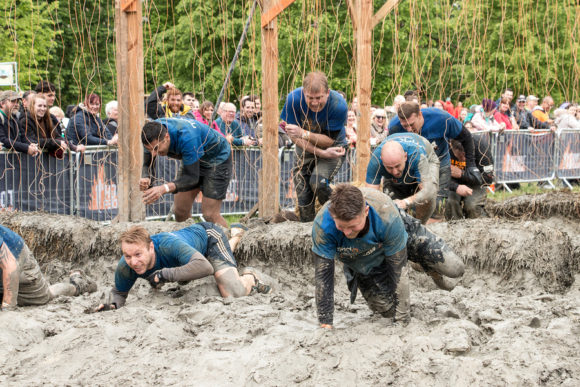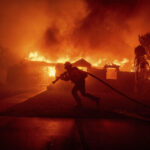Obstacle course runs like Tough Mudder and Warrior Dash are becoming more popular and are relatively safe for participants, a Canadian study suggests.
Only about 1 percent of participants are injured during these races, and most of the injuries are minor and only require first aid, the researchers write in Emergency Medicine Journal.
Obstacle course runs can be anywhere from 3 miles long to a full marathon. They can involve difficult terrain like mud and military-inspired obstacles like wall climbs, gymnastic rings, and even barbed wire or fire jumping.
In 2015, over 4.5 million people in the United States participated in an obstacle course run, the researchers write.
“The growing popularity of OCRs has led to significant concerns regarding their safety,” lead author Dr. Alana Hawley told Reuters Health by email.
The health risks of participating in such obstacle courses are minimal, however, and are comparable to the injury risks at any mass gathering event, said Hawley, of McMaster University in Ontario.
To determine how safe obstacle course races are, the researchers used data on more than 45,000 people participating in eight 2015 Mud Hero events in Canada.
The study team collected information from the medical charts recorded by the event staff, including the nature of the injuries and whether the patients needed further care at a hospital.
In total, 557 people, or 1.2 percent of the race participants, were treated for injuries at the eight events, with 609 medical complaints in total.
Three fourths of the complaints were for muscle or bone injuries and most were treated with first aid or basic medical equipment on site.
Most of those injured – 89 percent – returned to the event without needing any further medical care.
The race medical staff advised 48 patients, or 9 percent of those treated, to seek medical care, either immediately or in the near future.
Eleven patients had to be transferred to the hospital for injuries that included broken bones, dislocated joints, head injuries, chest or stomach pain, and falls.
“OCRs are distinct events with unique health risks and challenges in providing medical care,” Hawley said, but she noted that there are currently no safety guidelines or medical standards for these events.
Hawley also noted that because the events are often held in rural areas, there has been some concern that injured participants could overwhelm small local emergency departments.
Marna Rayl Greenberg, Director of Emergency Medicine Research at Lehigh Valley Hospital and Health Network in Pennsylvania, said by email that her own research on obstacle runs had very different results.
Greenberg’s 2013 study (http://bit.ly/2czA8Zf) focused on seriously injured patients at an event at which there were 100 emergency medical services calls altogether. She suggested that the Mud Hero events may be less dangerous than other races, which can involve barbed wire, ice baths, and electric shocks.
“Take the time to look at the type of obstacles that you are asked to complete in the race you are interested in participating in,” said Greenberg, who was not involved in the new study.
Greenberg said it may be wiser to choose events with both hard and easier course options and to avoid or walk around higher risk obstacles, particularly electric shocks.
Was this article valuable?
Here are more articles you may enjoy.



 Aon Promotes Reinsurance Leaders as John Neal Takes a New Direction With AIG
Aon Promotes Reinsurance Leaders as John Neal Takes a New Direction With AIG  First-Half 2025 Insured Losses From Natural Cats Hit $100B, Driven by US Events
First-Half 2025 Insured Losses From Natural Cats Hit $100B, Driven by US Events  New Book Proposes Four-Prong Legal Strategy to Negate Nuclear Verdicts
New Book Proposes Four-Prong Legal Strategy to Negate Nuclear Verdicts  Louisiana Insurers Must Disclose Prior Policy Premiums Under Controversial New Law
Louisiana Insurers Must Disclose Prior Policy Premiums Under Controversial New Law 

